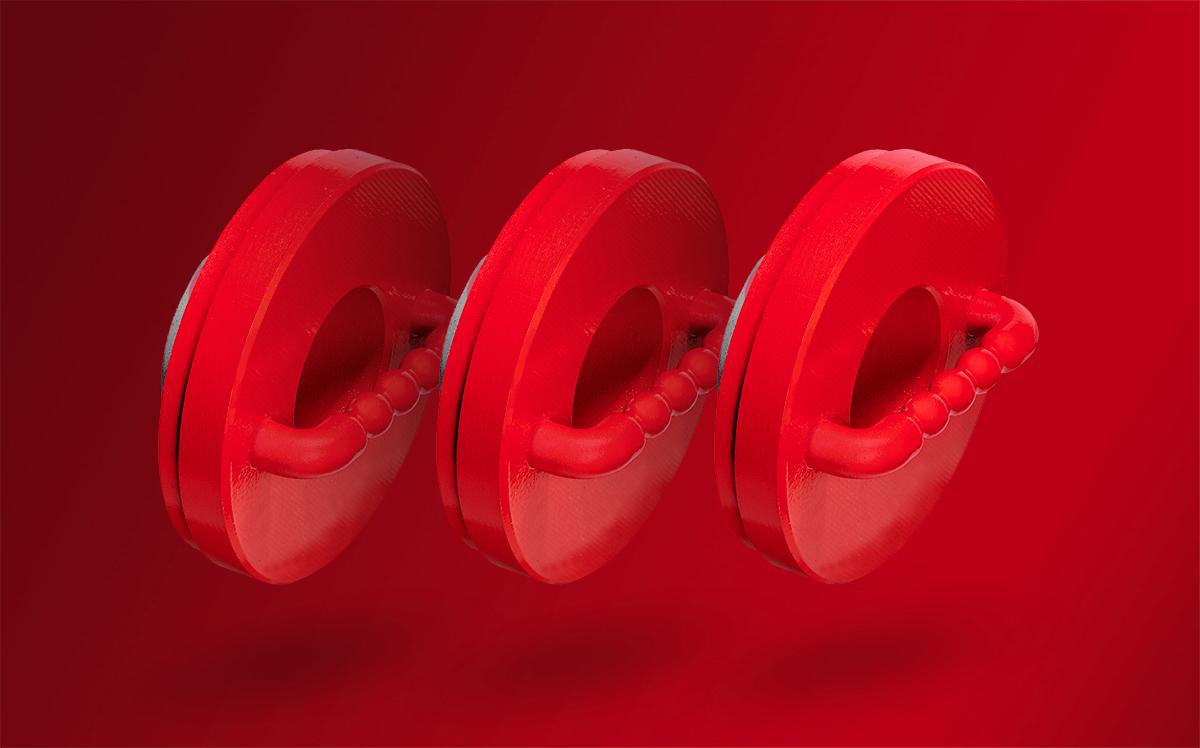
Four years into its additive manufacturing (AM) journey, Satair has certified more than 300 3D printed flying parts and tools to simplify aircraft maintenance, but the aftermarket specialist still saw areas for improving the process. While the Airbus subsidiary had been able to reduce lead times and the number of assemblies for tools it was 3D printing for customers, Satair was hoping to advance designs further to eliminate piece parts such as pins and enable more efficient supply chain setups in which tools could be manufactured and delivered within 48 hr.
To investigate the best ways to optimize the process, Satair collaborated with Chicago-based AM specialist Fast Radius, which is partnered with and partially backed by UPS. According to John Flynn, VP customer success at Fast Radius, the company specializes in an application launch program where its engineers are embedded with customers to identify and design for AM capabilities.
“Our goal is to do the discovery and design work with the Satairs of the world to help the flywheel spin quicker, help them test materials to make the technical case and business case,” and then, ultimately monetize the process through serial production of tools and parts, Flynn explains.
Through the partnership, Satair identified a number of maintenance tools it wanted to rethink within the context of newer 3D printing technologies and efficiencies, such as a gags tool used for Airbus A380 landing gear maintenance and a flap zero locking tool for locking control lever flaps in the A320 cockpit during maintenance.

“Even though our existing AM parts already had significant part reductions, the objective was to come up with new designs to further reduce the number of sub-assemblies,” says Felix Hammerschmidt, head of additive manufacturing solutions at Satair. “The reduction of all additional supply chain steps prevents supply chain risk and reduces the overall lead time as no assembly is required anymore. This paves the way for future local printing of tools, as no additional post processes after the printing is required.”
In addition to using Fast Radius’ Virtual Warehouse offering, which stores digital part files in the cloud to enable on-demand printing of products, Satair opted to leverage HP Multi Jet Fusion (MJF) color printing technology to print tools in bright orange or red colors so additional painting processes were no longer required. The technology enables tools to not only be printed in full color, but also provides the ability to print logos, part and serial numbers or QR codes directly on the tool.
Through the redesign process, engineers reduced the gag tool’s mass by 60% and improved its strength-to-weight ratio, and the flap zero locking tool was reduced from six components to two with a 50% lead time reduction.
“In the second part of the project, we wanted to show what we can achieve when we push the boundaries of logistics and production for these lean tool designs,” says Hammerschmidt. “Two tools out of our catalog were ordered randomly to simulate an urgent airline demand and Fast Radius proved that they were able to manufacture and deliver these tools within 48 hr. from their facility to the Hamburg Satair warehouse.”
According to Flynn, Fast Radius’ partnership with UPS and its production facility co-located at the logistics provider’s Louisville, Kentucky facilities enabled the quick turnaround. The company’s vision is to build more of these “micro-factories” around the world for in-region production and fulfillment on the back of UPS’ global network.
Fast Radius and Satair are considering future opportunities to partner on discovering new efficiencies and designs, and Hammerschmidt says one area it is looking into is further applications for HP MJF technology and newer metal technologies. Satair expects further designs to be industrialized this year.





